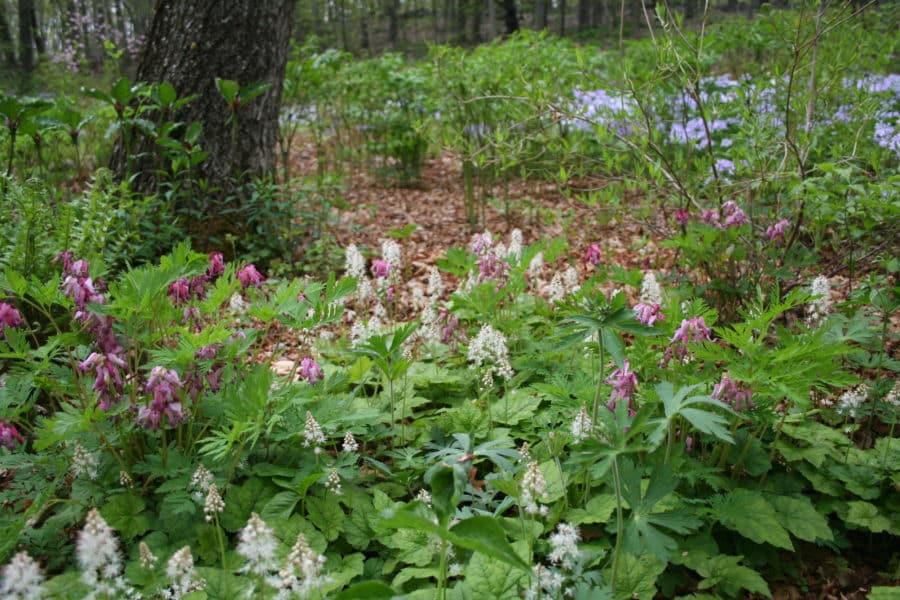I wrote about invasive species in Beauty or the Beast almost 2 months ago, but I am again thinking about invasive plants. This time they are not at all beautiful. These plants have swallowed trees whole, obliterated stone walls, taken over the habitat and run down the hill growing over everything in their path.
I am talking about Oriental bittersweet, multiflora rose, buckthorn (both glossy and European), Japanese barberry, burning bush and privet. Although privet is not officially listed as invasive, it is considered “Likely Invasive” in my Guide to Invasive Plants in Massachusetts, from the Division of Fisheries and Wildlife, and here it has been abundant. You can see from the picture that individual plants are not identifiable it is one large mass of bad plants. Taking on a job like this is not for anyone. Fortunately, I have a staff of 4 wonderful college students who looked at this and said “Where do I start?” and finished with a sense of satisfaction in having conquered the beast. Controlling invasives in a setting like this takes a plan, a LOT of hard work, patience and some herbicide. We cut, pulled and dragged these plants out of this mass. We tag discreet vines rooting into the soil, we leave the stems tall so I can return for the kill, and best of all we have a place to dump them where they will not grow again.
As a homeowner, tackling these plants can seem at the very least daunting. People often ask me “Do you think you will ever get rid of ______ (fill in your favorite invasive plant here)?” The truth is no, I will never be able to get rid of it, but I am aiming for some control. I try to tackle one small area at a time. I encourage all of you to try to think of the small successes, take on a little at a time. It is a challenge, but we can all help by eradicating the invasive plants in our own yards. Now is an excellent time to make a plan. It is very hot and difficult to spend much time outside in the beating sun. Choose an area that you want to work in. See if you can figure out whom your foes are – and determine a method of attack. Most importantly, where will the old material go? What kind of equipment do you need? Just a pair of gloves and a pruning shear? Or the chain saw, brush cutter and a tractor?
Where you put the cut material is important. Fresh cut vines can root into rich compost mix and leave behind seeds that will haunt you for years. I like to dry the material out by spreading it in a pile on the lawn to bake in the summer sun. Don’t put it on a compost pile, but make a brush pile with lots of air pockets that will help it to dry out. Designate an area where you can store such material until it is dead enough to go into the compost (still be careful). Cut and remove the plants before the seed have ripened – or are even close to ripening, because these dastardly plants can allow their seed to ripen after they have been cut off. Now that I have you thinking about control, next week we will talk about killing the plants and restoring the habitat.



